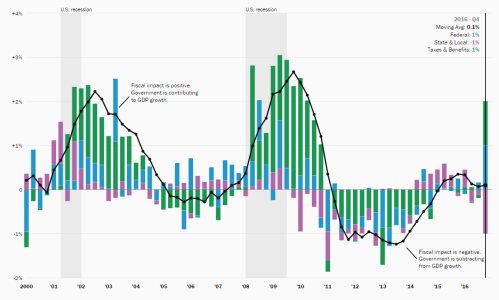The global financial crisis of 2008 led to far-reaching changes in financial regulation. Papers presented at the 2020 Municipal Finance Conference investigate two aspects of the impact of these changes on the municipal bond market.
In 2016, the Securities and Exchange Commission implemented a series of reforms designed to reduce the risk of runs on money market mutual funds (MMFs) such as the ones that occurred during the financial crisis. The new regulations required funds held by institutional investors to adopt a floating net asset value (NAV) instead of maintaining a fixed $1 per share NAV, among other things. This reform impacted tax-exempt municipal MMFs, which were a crucial source of financing for state and local governments as they held over $200 billion in municipal government debt.
Chuck Boyer and Kelly Posenau of the University of Chicago Booth School of Business find that the reform led to a dramatic drop in demand for tax-exempt funds. In turn, tax-exempt fund holdings of municipal debt dropped from $225 billion at the end of 2015 to under $125 billion at the end of 2016. The authors show that this drop in demand was associated with an increase in short-term borrowing costs. They also observe a larger increase in short-term borrowing rates for municipalities with a larger share of borrowing from institutional funds. Importantly, since the reform mainly targeted institutional funds, these municipalities were more exposed to the demand shock. Furthermore, smaller issuers and sectors were most affected by the reform. The authors conclude that “any policies which may decrease the attractiveness of funds holding tax-exempt municipal debt may lead to decreased lending to municipal governments and consequently higher borrowing costs.”
In another post-crisis change, the Basel Committee on Banking Supervision required banks to maintain a minimum liquidity coverage ratio (LCR) based on the amount of high-quality liquid assets (HQLA) on their balance sheets—basically enough liquidity to last during 30 days of stress. Initially, U.S. regulators decided that municipal bonds would not be considered HQLA. Banking regulators initially questioned the liquidity of municipal bonds and decided against classifying them as HQLA. The Federal Reserve Board unilaterally reversed this decision a year later and allowed general obligation municipal bonds (i.e., bonds backed up with the full faith and credit of the issuer) to be considered as HQLA, but not revenue bonds (i.e., bonds backed by a specific revenue stream).
Jacob Ott from the University of Minnesota finds that changing this rule had important effects on municipal bond markets. Including general obligation bonds as HQLA led to an increase in bank demand for these bonds. This led to a decrease of about 5 basis points in the spread between the yields on general obligation bonds and revenue bonds. While this decrease might appear small, Ott points out that since the average yield spread in his sample is 25 basis points, this result is economically significant. Importantly, he finds no evidence that this decrease in yields reflected a change in risk. Rather, municipalities that are able to issue both types of bonds issued a higher proportion of general obligation bonds in the aftermath of the rule change. The author concludes that “classifying general obligation municipal bonds as high-quality liquid assets in the regulatory accounting for the liquidity coverage ratio has a spillover effect by influencing municipal market pricing and behavior.”
Editor’s Note:
These papers were prepared for the 2020 Municipal Finance Conference on July 13 & 14, 2020. The conference is a collaboration of the Brookings Institution’s Hutchins Center on Fiscal and Monetary Policy, the Brandeis International Business School’s Rosenberg Institute of Public Finance, Washington University in St. Louis’s Olin Business School, and the University of Chicago’s Harris Institute of Public Policy. It aims to bring together academics, practitioners, issuers, and regulators to discuss recent research on municipal capital markets and state and local fiscal issues.
The Brookings Institution is committed to quality, independence, and impact.
We are supported by a diverse array of funders. In line with our values and policies, each Brookings publication represents the sole views of its author(s).





Commentary
How did post-2008 reforms affect the muni bond market?
July 13, 2020